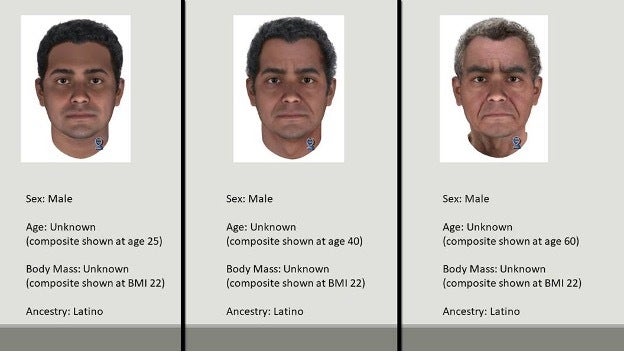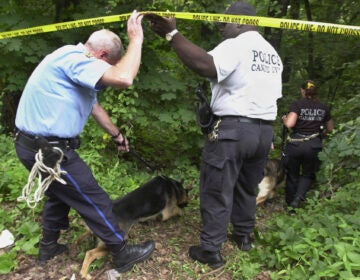Philadelphia police release new images of ‘Fairmount Park rapist’ suspect
New DNA technology could help crack a cold case in Philadelphia and police are seeking help from the public.

File photo: Shown is a police vehicle in Philadelphia, Thursday, June 24, 2021. (AP Photo/Matt Rourke)
A criminal case that has gone cold for more than a decade could have a new chance at being solved.
The so-called Fairmount Park rapist allegedly raped and killed 30-year-old Rebecca Park and sexually assaulted three other women almost two decades ago, but police have never been able to identify the suspect. Now, a DNA sample has resulted in a new composite using high-tech computer technology.

Ryan Gallagher, lab manager at the Philadelphia Office of Forensic Sciences, said the images showing what the suspect could look like now were created with DNA phenotypic analyses, which use DNA to help predict physical characteristics.
“The suspect will most likely have brown or black-colored hair, light brown or fair skin color, black or brown eyes, and will most likely not have freckles,” said Gallagher.
Special Victims Unit Head Captain Mark Burgmann said the suspect told victims he came from a large family from Puerto Rico and that he was lonely.
It is the first time this technology has been used to help solve a Philadelphia crime. The system can determine such things as facial features, but cannot tell, for example, whether the person has gray hair or no hair on his head at all.

“It uses data from tens of thousands of genes from your DNA,” said Gallagher. “They predict physical characteristics, such as hair color, skin color, eye color, and freckling.” Combining that information about ancestry and facial modeling, Gallagher said the computer can come up with a composite drawing.
Gallagher says over the past 18 years, the Philadelphia Police Department has done a lot of work to investigate the case, and even with the new DNA analysis, it has not found a match on Combined DNA Index System, better known as CODIS, the national DNA database used for unsolved cases.
The new composite drawing is very close to the original sketches of the suspect given by the victims in the case.
Police are hoping that the new photo, which has been aged by forensic artists to portray the man as a 40-year-old and a 60-year-old, might result in someone making a connection and coming forward to help make an arrest.

Get daily updates from WHYY News!
WHYY is your source for fact-based, in-depth journalism and information. As a nonprofit organization, we rely on financial support from readers like you. Please give today.







